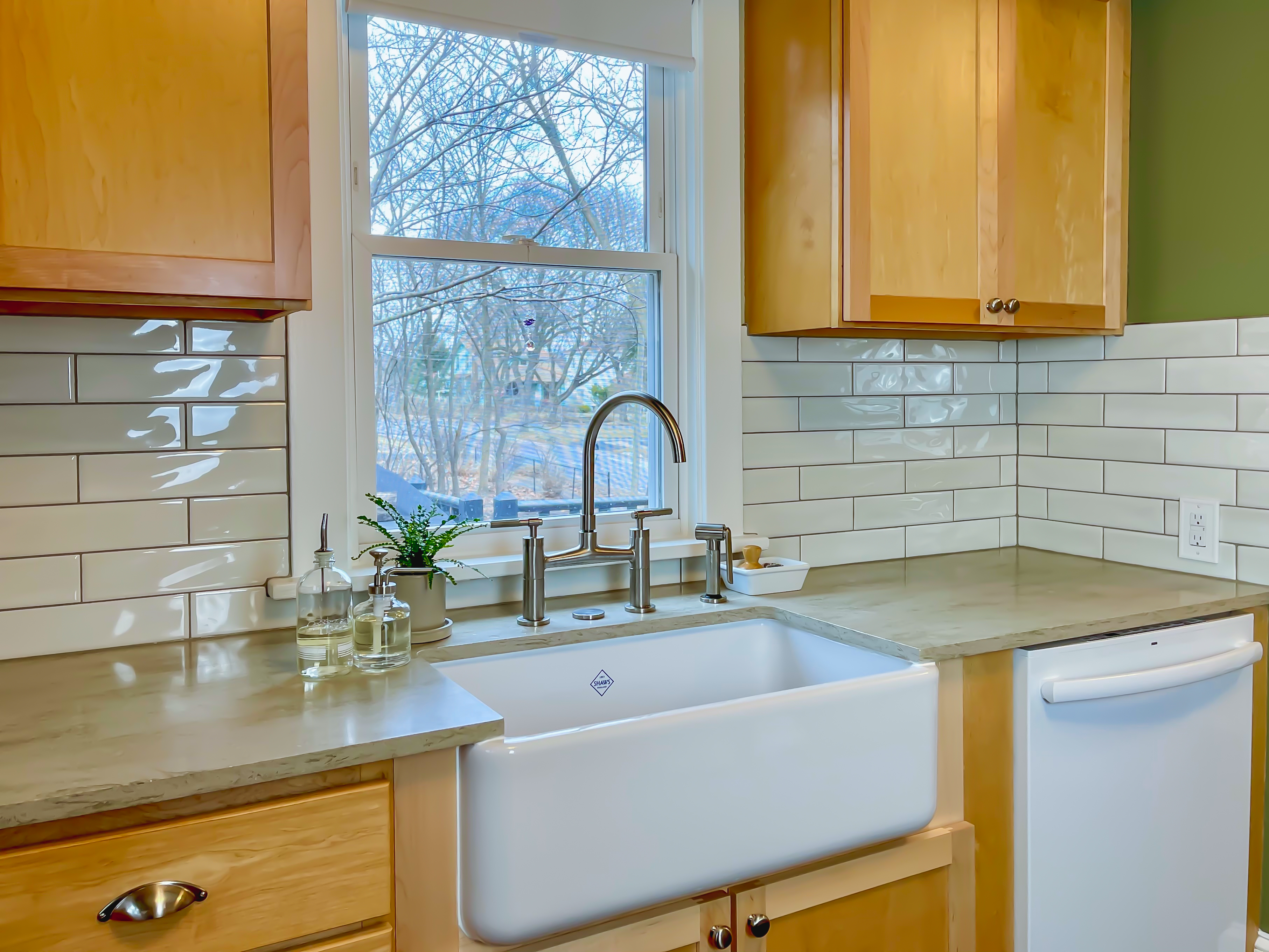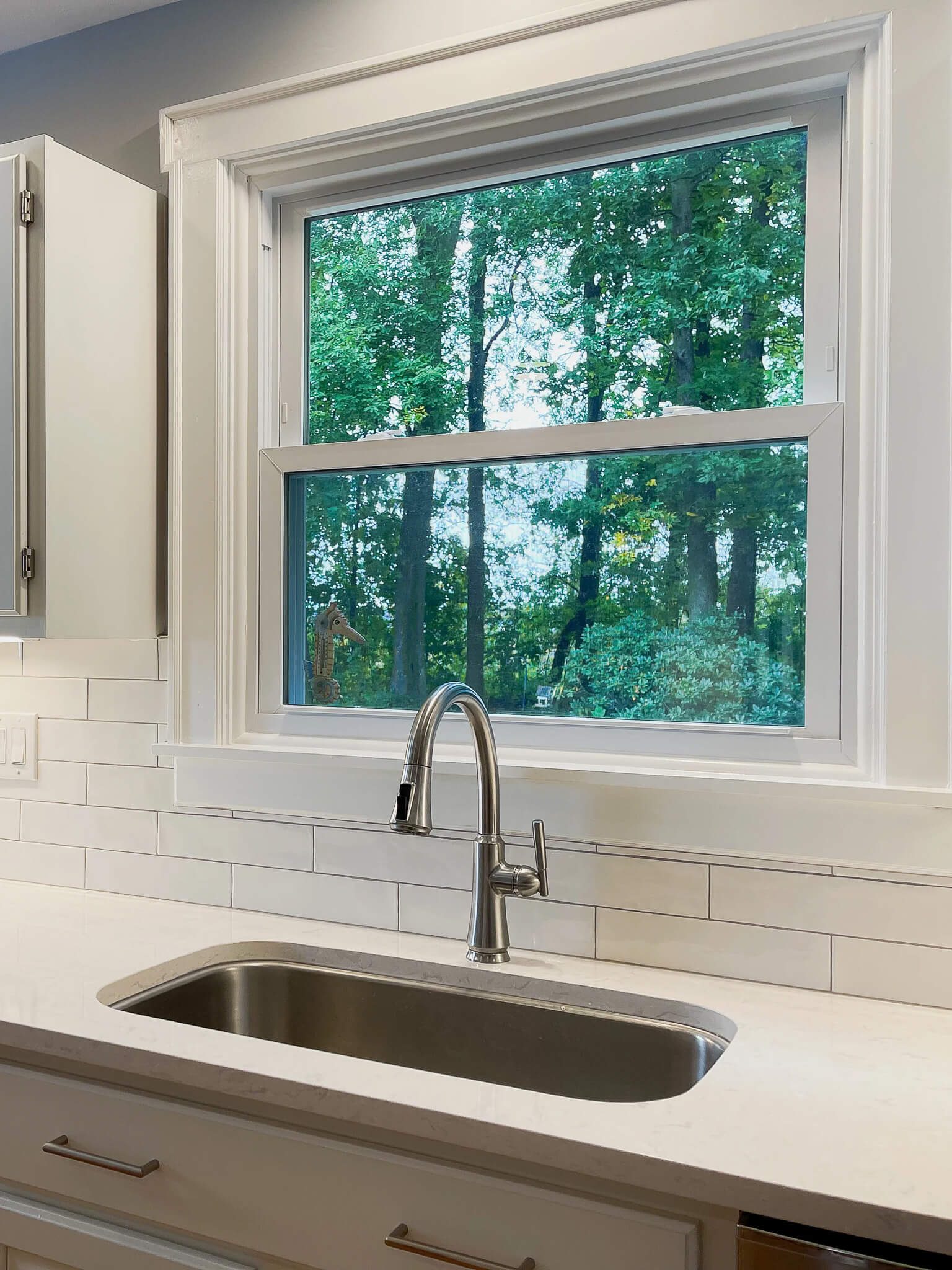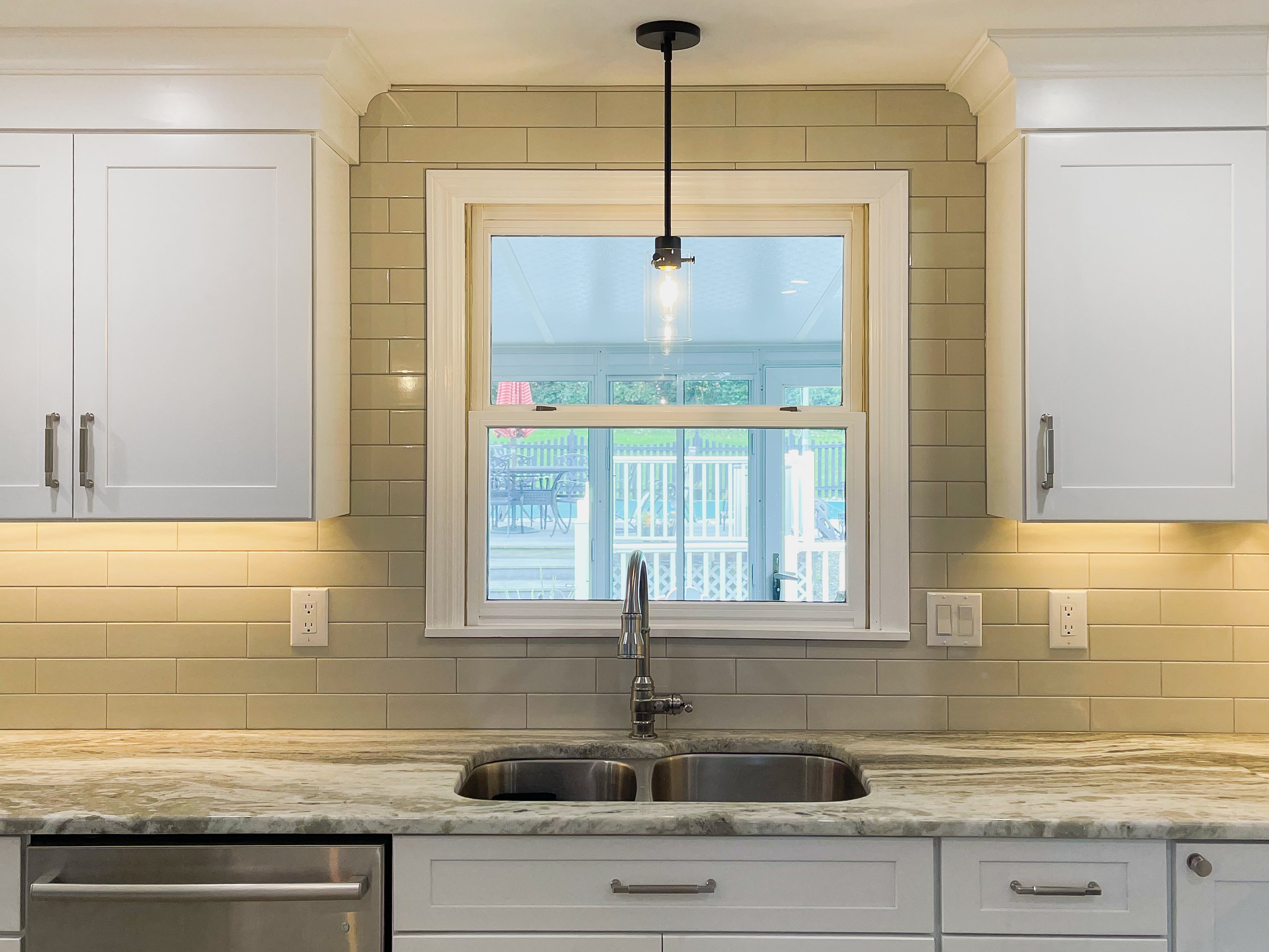
In any kitchen, the sink likely receives the most daily use. It’s important to choose a sink that is right for you. There are a variety of materials and styles for sinks and each has advantages and disadvantages.
When selecting a sink, first consider the size and use of your kitchen. If your kitchen is small, you may be limited to a smaller sink to optimize the workspace. How often do you use the sink during the course of a day? Do you like to cook or entertain? If so, size, depth and maintenance will be important when deciding on a model. If you do a lot of hand washing of pots, pans and dishes, volume will also be a factor. And finally, one of the most important considerations in selecting a sink is the way you work in your kitchen. Do you work from left to right, or right to left?
Here is an overview of some of the most common and popular options for sinks:
Five Popular Types of Sink Materials
Stainless steel. Stainless steel sinks are the most popular sinks in homes today. Homeowners like the look and stainless steel is affordable, durable and easy to maintain. Stainless steel sinks come in various gauges (i.e. the thickness of the steel). Thicker sinks are more resistant to dents and scratches. A couple disadvantages of stainless steel sinks include water and mineral spots showing unless wiped, and they can cause gray scratches on certain types of china or ceramic dishware.

Cast iron sinks with enamel coating. Cast iron sinks are attractive but heavy (they can be upwards of 100 lbs.). Cast iron sinks come in many colors and pricing may vary based on your color choice. Modern enamel is very durable and easy to maintain. A disadvantage of cast iron sinks are that they can be susceptible to chipping if something heavy is dropped and scuffs but minor chips can be repaired. Metal pots might also mark the surface of the sink when washed but scratch marks can be rubbed off with cleanser. Another disadvantage of cast iron sinks is that they are “unforgiving” when glass or china is dropped. Due to the hard surface, fragile items tend to shatter.
Composite sinks. Composite sinks are made of ground granite or quartz combined with resin. They are strong, durable, chip resistant and come in a range of colors. They also look great with stone counters and can be under-mounted. One disadvantage of composite sinks is that they can be scuffed by metallic pots, pans and utensils. Marks can be cleaned off with cleanser but are more difficult to remove from dark colored sinks.
Fireclay sinks. Fireclay sinks are made of shaped clay and fired at a high temperature for hours. They are durable, easy to maintain and hygienic. Styles are often large, i.e. farmhouse style sinks are often fashioned from fireclay. Fireclay sinks can be expensive and require special care for installation.
Acrylic sinks. Acrylic sinks can look like enamel and are affordable. Typically, the acrylic is reinforced with fiberglass. The advantage is that they are stain resistant and the surface is renewable. Scratches can be sanded and the surface polished. However, acrylic is not heat resistant and can be damaged by a hot pot.
Style/Configuration
Sinks come in many shapes and sizes. Sink bowls can range from 6-to-12 inches deep. Deeper bowls reduce splashes and are better for washing large pots, pans and bake ware. While a sink can be as deep as 12 inches, the right depth for your kitchen should be determined by your height and reach. When you shop for sinks, test display models to get a sense of how the sink may function for you at home.
Single bowl. If space is limited and you often wash pots and pans in the sink, you may want a large, deep single basin sink.
Double bowl. Many people prefer a sink with two bowls, one for washing dishes and the other for rinsing. Each of us has an orientation when working in a kitchen. Some people work from left to right, while others will work in the opposite direction. If you work from left to right, consider having a larger bowl on the left as you face the sink and the disposal on the right in the smaller sink where you rinse dishes. Reverse the position of the disposal and sinks if you work the opposite way.

Triple bowl. Triple bowl sinks require a counter space of 40 or more inches to mount. Bowls can vary in size and depth depending on your needs. People who are passionate about cooking like these sinks because one sink can be dedicated to cleaning produce or prepping food.
Farmhouse. Farmhouse sinks have a front apron that replaces part of the counter. They come in single and double bowls and are made many materials: fireclay, composite, cast iron, soapstone, copper and stainless steel. Styling is important with farmhouse sinks. Designers offer many options such as fluted aprons, curved aprons and flat aprons. Most farmhouse sinks come without holes, therefore faucets, sprays and soap dispensers are installed through the counter.
Contact our team today to start discussing your upcoming projects. Our team will work with you every step of the way!
Related Posts
How to Select the Best Sink for Your Kitchen
In any kitchen, the sink always receives the most daily use. Therefore, it’s important to choose a...
6 Great Design Ideas for Kitchen Sinks
If you’re planning to remodel or update your kitchen, give some thought to the type of sink that...
The Newest Essential: A Second Kitchen Sink
If you love to cook and entertain in your kitchen, one sink may not be enough. More homeowners are...
